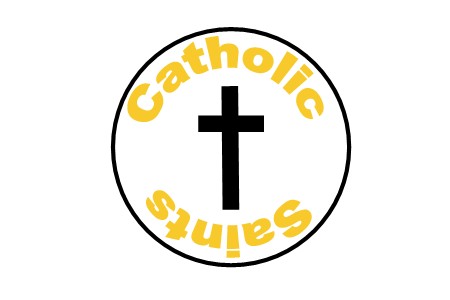|
Saint Adomnan
Saint Adomnan a descendant of Colmán mac Sétna, and cousin of Saint Columba and the ancestor, through his son Ainmire, of the kings of Cenél Conaill. He was the son of Rónán mac Tinne by Ronat, a woman from the Uí Néill lineage known as the Cenél nÉnda. Although it is presumed that he was born in the territory of his kin-group, the Cenél Conaill, whose territory lay in County Donegal. His childhood anecdotes seem to confirm at least an upbringing in this area. He begun his monastic career at a Columban monastery called Druim Tuamma. He joined the Columban familia (i.e. the federation of monasteries under the leadership of Iona Abbey) around the year 640. Some modern commentators believe that he could not have come to Iona until sometime after the year 669, the year of the accession of Abbot Failbe, the first abbot that he gives any informationabout. He attained a level of learning rare in Early Medieval northern Europe. It has been suggested by Alfred Smyth that he spent years teaching and studying at Durrow, and while this is not accepted by all scholars, remains a strong possibility. 
Iona Abbey In 679, he became the 9th abbot of Iona after Columba. He enjoyed a friendship with King Aldfrith of Northumbria. In 684, Aldfrith had been staying with him in Iona. In 686, after the death of Aldfrith's brother King Ecgfrith of Northumbria and Aldfrith's succession to the kingship, he was in Northumbria on the request of King Fínsnechta Fledach of Brega, in order to gain the freedom of sixty Gaels who had been captured in a Northumbrian raid two years before. This he achieved. In keeping with Ionan tradition,he made several more trips to the lands of the English during his abbacy. It is sometimes thought, after the description of events given by Bede, that it was during his visits to Northumbria, under the influence of Abbot Ceolfrith of Jarrow that he decided to adopt the Roman dating of Easter that had been agreed years before. Bede implies that this led to a schism at Iona, whereby he became alienated from the Iona brethren, and went to Ireland to convince the Irish of the dating. Bede's account is however rarely believed by historians working in the area, although it is clear that he did adopt that Roman dating, and did argue the case for it in Ireland. In 697, it is believed that he promulgated Cáin. The he was promulgated amongst a gathering of Irish, Dal Ríatan and Pictish notables at the Synod of Birr. It is a set of laws designed, among other things, to guarantee the safety and immunity of various types of non-combatant in warfare. For this reason it is known as the "Law of Innocents". It is the earliest initiative of this kind recorded from Europe, and as such is often regarded, however, as a proto-type for the Geneva Convention and the Universal Declaration of Human Rights. Workshis most important work, and for which he is best known, is the Vita Columbae (i.e. "Life of Columba"), a hagiography of Iona's founder, Saint Columba. The source is by far the most important surviving work written in early medieval Scotland, and is a vital source for our knowledge of the Picts, and a great insight into the life of Iona and the early medieval Gaelic monk. He also wrote the treatise De Locis Sanctis (i.e. "On Holy Places"), an account of the great Christian holy places and centres of pilgrimage. He got much of his information from a Frankish bishop called Arculf, who had personally visited the Egypt, Rome, Constantinople and the Holy Land, and visited Iona afterwards. Also attributed to him is a good deal of Gaelic poetry, including a celebration of the Pictish King Bridei's (671-93) victory of the Northumbrians at the Battle of Dunnichen (685). He died in 704, and became a saint in Scottish and Irish tradition, as well as one of the most important figures in either Scottish or Irish history. His death and feast day are commemorated on September 23. Born 627/8, County Donegal, Ireland Died 704, Iona, Scotland Venerated in Roman Catholic Church Canonized N/A Feast 23 September Patronage Diocese of Raphoe
Finished Reading about Saint Adomnan, Bring me Back to Catholic Saints please.
|





